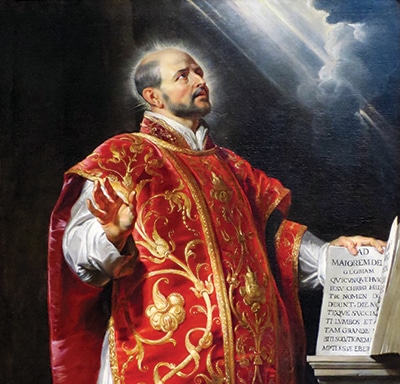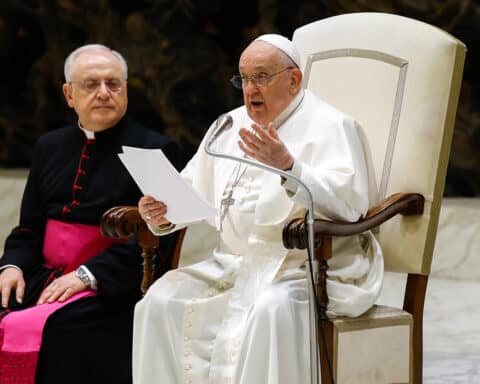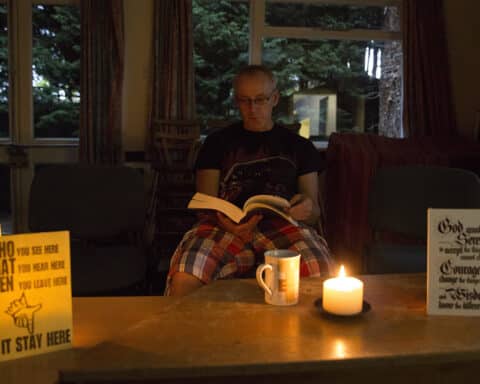It is said that if you have a person’s imagination, you have that person. You can lead, control and guide that person. It is also said that the imagination is like a well — waiting to be filled by good or evil. We know that with the internet today, input for our imagination is infinite. But not all images are suitable, positive, uplifting.
Pornographic images are easily found, and addiction to pornography has become a major problem, affecting youth, families and marriages. Pornographic images are easily accessible, are free or affordable, and can be viewed anonymously. Is there any way to stop this?
In 2015 the U.S. Conference of Catholic Bishops issued a pastoral letter, “Create in Me a Clean Heart,” in response to the crisis. Several bishops, too, have written letters on the topic. The goal here is not to argue that pornography is dangerous, or that it is dehumanizing. That is clear. We presume and start with that. Our goal is to suggest a way, or at least a help, to free oneself from the addiction, from the bad habits one has acquired. This way stems from the experience, life and teaching of St. Ignatius Loyola, founder of the Society of Jesus.
St. Ignatius, his experience
Ignatius of Loyola was a soldier and was wounded in battle in 1521. As a soldier, he led a worldly life, probably involving affairs with women. Lying on his sickbed, he had only a few books to read: the lives of saints and the life of Christ.
On that sickbed, he was converted to a new way of life. One key part of that was to be victorious in the battle to be chaste. He describes very exactly how this came about in his autobiography, which he dictated some years later. Lying in his bed of recovery, he recalls a vision that changed his life. This enabled him to be clear of vain thoughts and thoughts against chastity.
Conversion was underway. Holy desires and thoughts had begun to enter his mind. He writes that “these desires were not a little strengthened by the following vision. While watching one night he plainly saw the image of the Blessed Mother of God with the Infant Jesus, at the sight of which, for a considerable time, he received abundant consolation, and felt such contrition for his past life that he thought of nothing else. From that time until August 1555 [34 years later, we add] when this was written, he never felt the least motion of concupiscence. This privilege we may suppose from this fact to have been a divine gift, although we dare not state it, nor say anything except confirm what has been already said. His brother and all in the house recognized from what appeared externally how great a change had taken place in his soul” (Chapter 10).
It was this vision of Mary and the Child Jesus, a vision that he frequently enjoyed, that kept him chaste and pure for the rest of his life — so that “he never felt the least motion of concupiscence!” His impure thoughts vanished, and his imagination was cleansed as his imagination turned toward, focused on and was filled with images of Mary and Jesus. This desire to be with and see Jesus even led Ignatius to journey from Spain to the Holy Land to follow in the footsteps of Christ. And this emphasis on the imagination became a way of life for St. Ignatius, and part of his teaching, instruction and advice for others.
Guiding and teaching others

What Ignatius himself experienced — this experience of God-centered on Jesus Christ — he desired to share with others. He would achieve this through the “Spiritual Exercises,” a series of prayerful exercises that focus on Jesus Christ. And here is where the imagination comes strongly into play.
Many of the exercises have the person on retreat contemplate, imagine and relive the life of Christ, even going to minute details of the life of Christ. Rather than empty our imagination, we are to fill it with images of Jesus Christ. Ignatian prayer and mysticism differ from that of St. John of the Cross. As one scholar puts it, “Ignatius takes as much trouble filling the spirit with images as the mystics (Christians and Buddhists) do in emptying it out.”
In Ignatian prayer, most prayer periods begin with what he calls “the composition of place,” which is “a mental representation of the place,” “a representation of the place by seeing it in imagination.”
So important was this focus on the life of Christ that Ignatius instructed his early followers to draw up, publish and distribute drawings or sketches of the Gospel scenes to help in one’s prayer. In a sense, Ignatius would have us “put on the mind of Christ,” share the image of Christ and see the world as Christ saw it and sees it.
In the worldview of Ignatius, God, the good Spirit, the saints were not the only ones at work. Satan, the evil spirit, was constantly at work. Satan’s goal is to fill our minds with false, thin, anti-human images that degrade human dignity. The way to combat that attack from the evil one was, for St. Ignatius, to turn to and fill our minds and imaginations with good, wholesome, humane images.
Turning thoughts to Jesus and Mary
None could be more holy and wholesome, none better than those of Jesus and Mary. Thus when temptations, evil, impure thoughts and images come, one key solution is to turn our mind, our imagination, to images of Jesus, Mary and the saints. Together with that, we might also have “dart prayers” aspirations, such as “Come, Lord Jesus,” or “Jesus, Mary and Joseph, be at my side,” or “Come Holy Spirit.”
Finally, a related help would be to beat the devil at his own game by using the internet to have as resources some links to works of art, to the history of art, especially paintings of the Madonna and the Child Jesus. These should fill our imagination, rather than the salacious junk of pornography.
One way to check our progress, according to St. Ignatius, is the daily examination of conscience. And one part of that is to examine and review our use of our five senses. Have we used our eyes positively to see the good around us, the beauty of God’s creation? The Ignatian retreat ends with what he calls the “contemplation to attain the love of God.” In it, we recall the blessings of creation, the beautiful things God has given us — above all, the gift of his Son Jesus Christ, born of the Virgin Mary.
Replacing images
To review the main point. We live with our imagination. If it moves to and is attracted to bad images, to pornography, then we cannot simply turn that off and let our imagination go blank. Rather, we must replace, form, feed and fill the imagination with good, positive healthy thoughts and images. As Christians who believe in the Incarnation, what could be better than images of Jesus, Mary and the saints — as St. Ignatius discovered and taught.
Father Peter Schineller, SJ, is the archivist for the New York Province of the Society of Jesus and former associate editor of America magazine.





